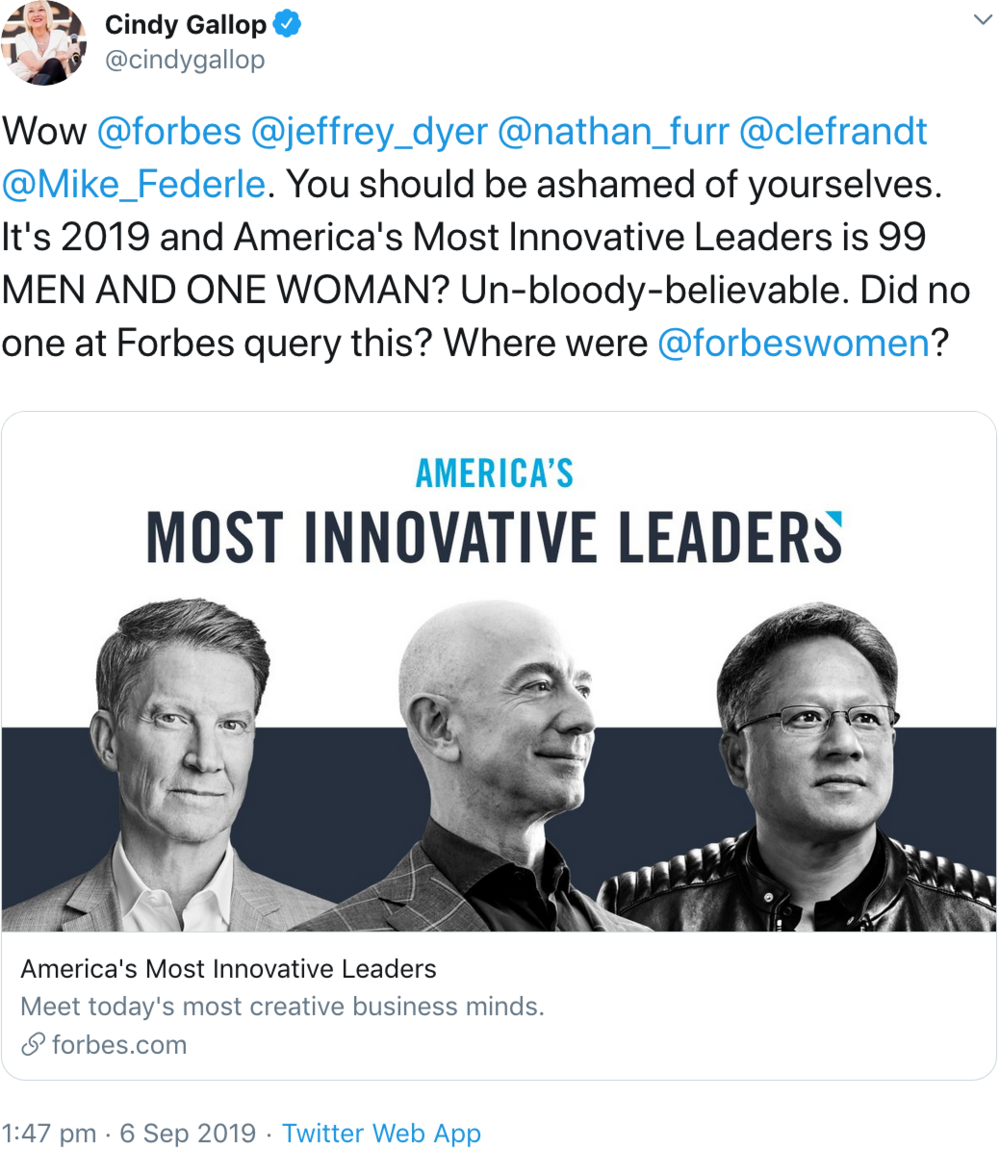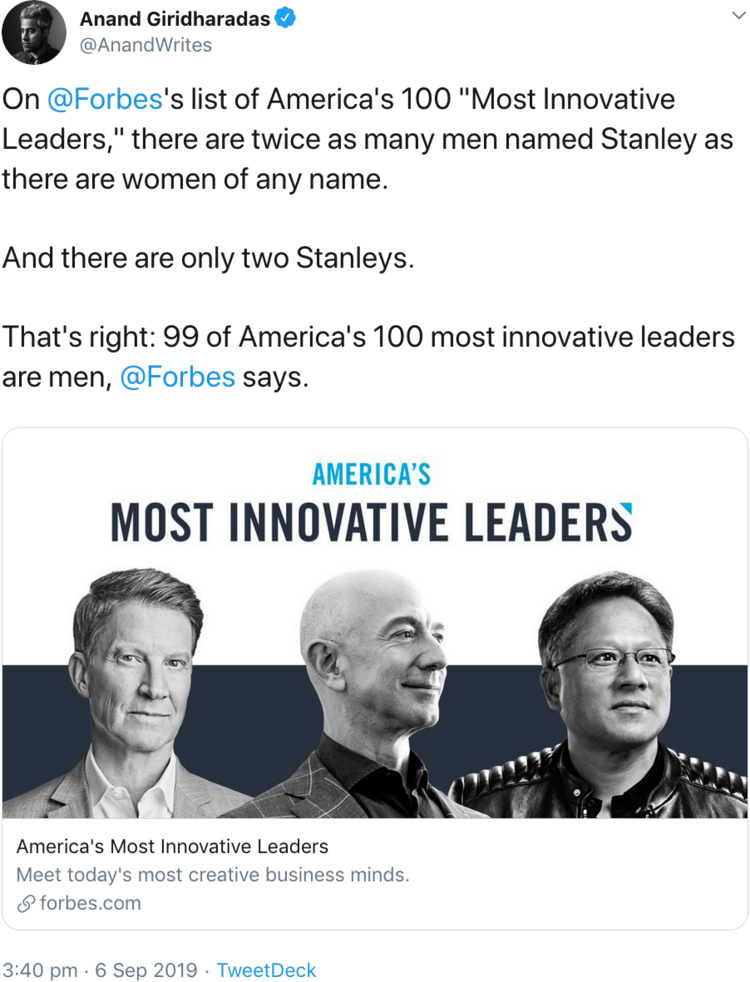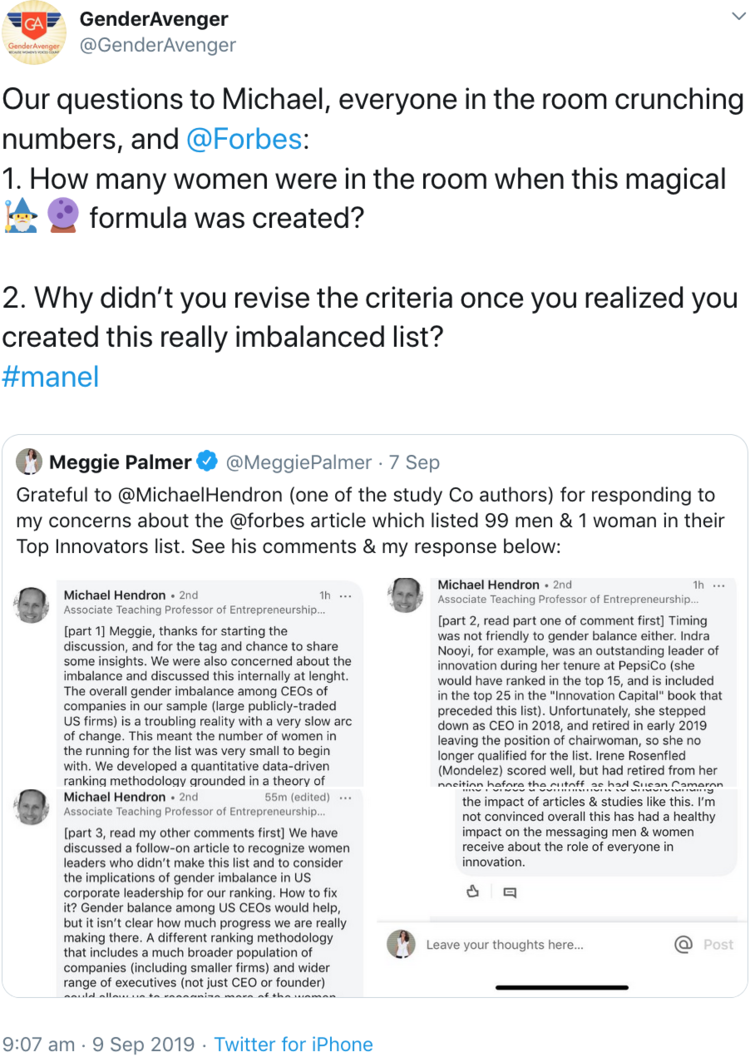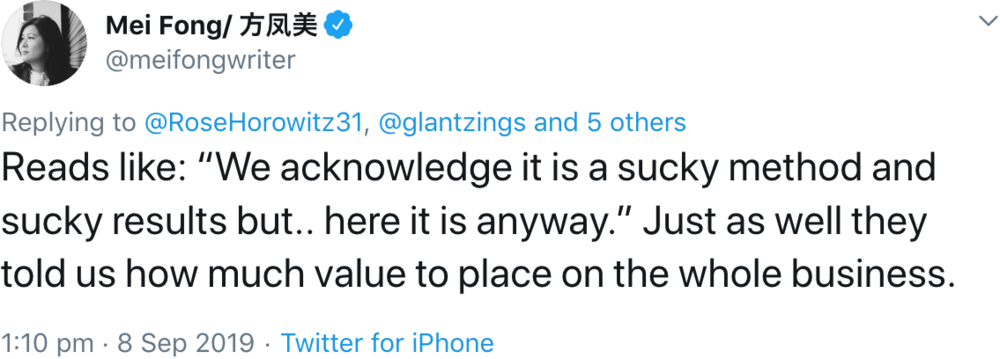How You Got Forbes' Attention and Forced Them to Evaluate Their Methodology
Just before 8:00 a.m. on Friday, September 6, our social media guru Amber alerted us to this tweet, and we knew we needed to take immediate action:
After a frenzy of email messages and Google Doc edits, we sent out a Forbes Action Alert. Loads of social shares later, it became obvious to Forbes and the creators of its “America’s Most Innovative Leaders” list that Forbes readers and almost everyone who heard about the list were not happy with the gross underrepresentation of women:
Criticism of the list continued throughout the weekend. On Sunday morning, Forbes editor Randall Lane addressed what he called a “missed opportunity”. In his article, Lane outlined the list criteria and how women were at a disadvantage from the get-go:
Our methodology was flawed, as well — at a minimum when it came to being more expansive with who was eligible to be ranked. While each data point individually made logical sense, as did focusing on data-rich public companies, the entire exercise collapses if the possible ranking pool doesn’t correlate at least somewhat with the overall pool of innovative talent.
While we appreciated Lane’s responsiveness, his explanation didn’t end the conversation.
Some tips from GenderAvenger founder Gina Glantz were in order if serious rethinking of Forbes’ list-making ideology was going to happen.
Gina laid out a series of 4 recommendations for Forbes:
When you are presented with lists with overwhelming numbers of men ask, “where are the women?”
Understand that “women only” lists are not substitutes for inclusion.
Don’t let your methodology lead to “concern.” You write, “For all our carefully-calibrated methodology, women never had much of a chance here,” and this says it all. This is likely based on a system created by historic patriarchy.
Be sure that women are involved in the development of what you are listing and who you are listing. As far as we can tell, the creators of the Innovators list and the involved researchers were all men. Gender balanced editorial oversight and research will make a difference.
Guess what? Our suggestions did not fall on deaf ears. Almost immediately after receiving the suggestions in his inbox, Randall Lane responded to Gina to thank her for reaching out, indicating that he would share GenderAvenger’s advice with a task force of five women and two men, chaired by a woman, that he has convened to address the lists issue as quickly as possible.
Randall Lane:
We’re moving quickly and thoughtfully to identify what happened and learn from it, and we’re hearing great suggestions to ensure this doesn’t happen again. We’re committed to use our platform to make sure everyone has a seat at the table.
Way to go team! Thank you to everyone in the GenderAvenger community who made this happen. The public pressure from our community helped move Forbes in the right direction and helped them see the error of their ways.
Want to help ensure more action and more impact?
Give today to our matching campaign supported by The Harnisch Foundation. We are less than a thousand dollars away from the $25,000 goal and the ability to keep holding organizations like Forbes honest in how they portray women in the public dialog.






